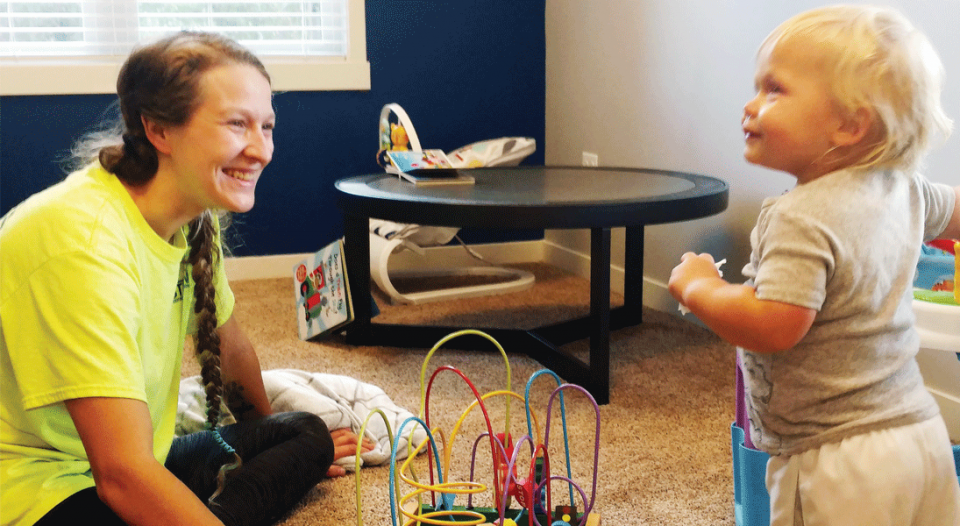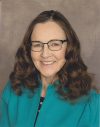“I was—I am—an alcoholic,” said Melody Gulbrantson. “On my own, I entered an AA recovery program. My sister cared for my children, but my son gave her trouble. I took him to live with me, but the house I was renting didn’t allow children, so I got kicked out. My savings ran out.
“Then I found a Community Resource Center brochure. I was desperate, so I called. It was the best call I ever made.”
A project of St. Andrew Lutheran Church in Mahtomedi, Minn., the Community Resource Center (CRC) originated when parishioners, responding to the 2008 economic crash, assessed federal, state and city social service programs, looking for gaps. The six-pastor congregation, some 10,000 strong, made connections within the county and with charitable organizations and churches of various denominations.
Then, in 2011, the congregation opened the CRC on its premises to offer holistic help with basic needs, health and wellness, temporary housing, employment and technology.
Kris Mason is one of CRC’s two caseworkers, consulting with clients to identify and overcome barriers to housing and employment. This can vary from getting an old eviction expunged from their record to helping them find the necessary tools for a better job.
“Each new day I come to work with the hope and anticipation of receiving good news from one of my current or past clients,” Mason said. “Someone may have found housing or a job. At day’s end, I’m exhausted but filled with the satisfaction of having planted seeds for the long term.”
The CRC offers a welcoming space with offices for individual counseling and a bank of computers for clients to use in job searches.
A storeroom and multiple oversize bins hold donations of diapers, backpacks and clothing, as well as bedding for those transitioning to their own housing. Volunteers sort the clothing weekly, and CRC clients may choose six items every two months.
Although the CRC is not a pantry, a weekly volunteer packs bags of food to be dispensed on a case-by-case basis. There is also housing rental assistance available for people experiencing an emergency.
“Our calling is to be in the work of unbinding those bound by life’s circumstances so they can experience the freedom and new life that Christ desires for all God’s children.”
Within 48 hours of making the best call of her life, Gulbrantson had been screened, approved and moved into a shelter, where she stayed for six weeks. She continues to visit the CRC today, even as she has progressed to ever-better jobs. “I can bounce my ideas off of staff and they give me an honest answer,” she said. “They’ve encouraged my growth. They’ve taught me to set goals.”
In addition to the CRC, St. Andrew operates shelters in nearby Oakdale and Hugo, with the goal of keeping families together. The two shelters combined can house as many as 17 families, and candidates for temporary housing are vetted and counseled on how to obtain it.
Both shelters offer a three-month maximum stay at no cost to the guests while the CRC helps them transition into jobs and independent living. Trained staff and a host of volunteers make sure the shelters are organized and the families are fed.
“I’ve learned that people can become homeless via a great variety of circumstances,” said Carrin Mahmood, director of the Hugo shelter. “Each day I wake up and realize how excited I am to go in to work. The people I serve are excited to have a chance, to have someone give them directions and put the ball in their court. At the end of the day, I know I’ve done something good.”
Gulbrantson completed the program to become a staff member at the Hugo house while working other jobs. She prepares meals, cleans rooms and listens to guests as one who was once in their shoes.
“I can help them project themselves into a better future,” she said. “My experiences are stories of hope.”
While staying at the shelters, children are driven to school by the school district, and parents looking for jobs go to the CRC, where they learn how to search online for openings, write a résumé and conduct themselves at an interview. Medical personnel check family vaccination records and treat minor illnesses. In the evening, families eat a healthy supper prepared by the house staff.
On Thursdays, guests, volunteers, staff and people from the community gather for a group supper at St. Andrew. This not only helps build community but also helps facilitate job networking.
St. Andrew allocates 14% of its budget to the CRC, which Sarah Breckenridge, one of the pastors, described as a calling of the congregation.
“Faith is a noun, but it can also be a verb,” she said. “It’s a gift we have, but it’s often renewed, revitalized and restored through action.
“Through the Community Resource Center and our shelters, we cling to Christ’s mission … not just talking or thinking about it but actually bringing it. Our calling is to be in the work of unbinding those bound by life’s circumstances so they can experience the freedom and new life that Christ desires for all God’s children.”
To learn more about the center, visit saintandrews.org.





